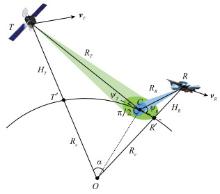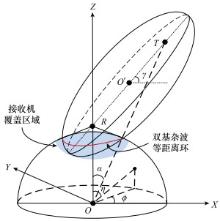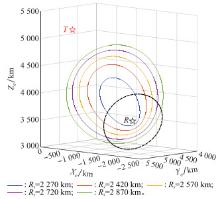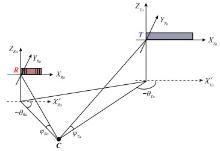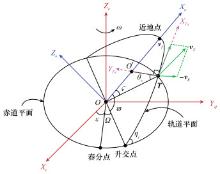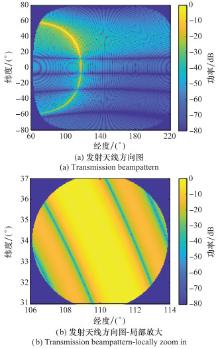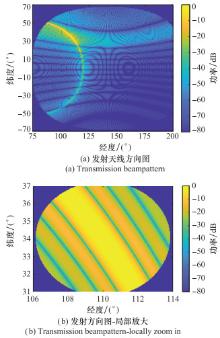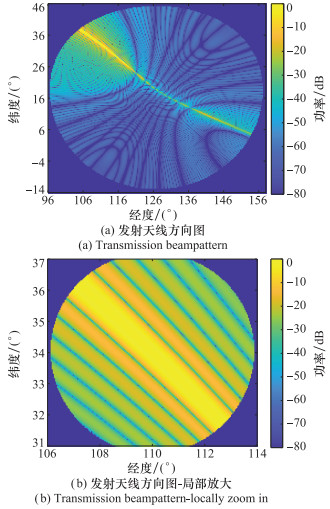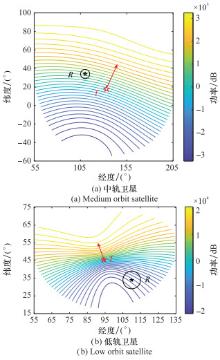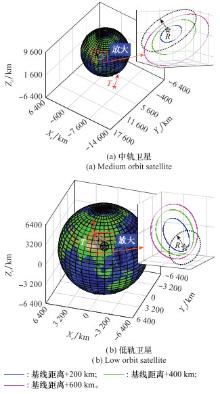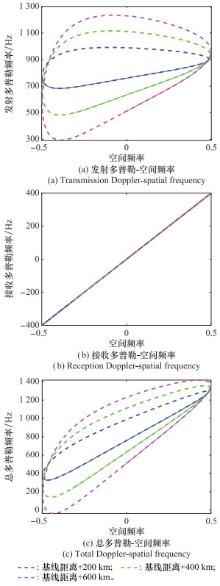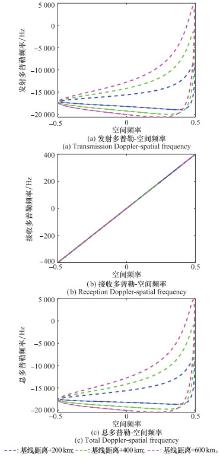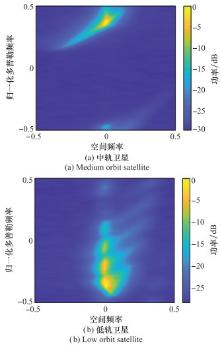| 1 |
PILLAI S U , LI K Y , HIMED B . Space based radar: theory & applications[M]. New York: McGraw-Hill Professional Publishing, 2007: 77- 137.
|
| 2 |
HUANG P H , YANG H , XIA X G , et al. A novel sea clutter rejection algorithm for spaceborne multichannel radar systems[J]. IEEE Trans.on Geoscience and Remote Sensing, 2022, 60, 5117422.
|
| 3 |
CHEN J Y , HUANG P H , XIA X G , et al. Multichannel signal modeling and AMTI performance analysis for distributed space-based radar systems[J]. IEEE Trans.on Geoscience and Remote Sensing, 2022, 60, 5117724.
|
| 4 |
NOHARA T J . Design of a space-based radar signal processor[J]. IEEE Trans.on Aerospace and Electronic Systems, 1998, 34 (2): 366- 377.
doi: 10.1109/7.670320
|
| 5 |
DAVIS M E, HIMED B, ZASADA D. Design of large space based radar for multimode surveillance[C]//Proc. of the IEEE Radar Conference, 2003.
|
| 6 |
DAVIS M E. Technology challenges in affordable space based radar[C]//Proc. of the Record of the IEEE International Radar Conference, 2000: 18-23.
|
| 7 |
GUTTRICH G L, SIEVERS W E, TOMLJANOVICH N M. Wide area surveillance concepts based on geosynchronous illumination and bistatic unmanned airborne vehicles or satellite reception[C]//Proc. of the IEEE National Radar Conference 1997: 126-131.
|
| 8 |
HARTNETT M P, DAVIS M E. Bistatic surveillance concept of operations[C]//Proc. of the IEEE Radar Conference, 2001: 75-80.
|
| 9 |
YANG X J, WANG W W, WANG Y L, et al. Clutter modeling and analysis for bistatic space-based early warning radar with GEO transmitter and LEO receiver[C]//Proc. of the IEEE International Radar Conference, 2023.
|
| 10 |
ZHANG Q L, DONG Z, ZHANG Y S, et al. GEO-UAV bistatic circular synthetic aperture radar: concepts and technologies[C]// Proc. of the IEEE International Geoscience and Remote Sensing Symposium, Beijing, China, 2016: 4195-4198.
|
| 11 |
KAN Q Y, XU J W, LIAO G S, et al. Clutter compensation for space-air bistatic radar based on unitary subspace transformation[C]//Proc. of the IEEE International Radar Conference, 2023.
|
| 12 |
ESPETER T, WALTERSCHEID I, KLARE J, et al. Synchronization techniques for the bistatic spaceborne/airborne SAR experiment with TerraSAR-X and PAMIR[C]//Proc. of the IEEE International Geoscience and Remote Sensing Symposium, 2007: 2160-2163.
|
| 13 |
RODRIGUEZ-CASSOLA M , BAUMGARTNER S V , KRIEGER G , et al. Bistatic TerraSAR-X/F-SAR spaceborne-airborne AR experiment: description, data processing, and results[J]. IEEE Trans.on Geoscience and Remote Sensing, 2010, 48 (2): 781- 794.
doi: 10.1109/TGRS.2009.2029984
|
| 14 |
毛二可, 曾涛, 胡程, 等. 基于地球同步轨道合成孔径雷达的双基地探测系统: 概念及潜力[J]. 信号处理, 2013, 29 (3): 285- 292.
doi: 10.3969/j.issn.1003-0530.2013.03.001
|
|
MAO E K , ZENG T , HU C , et al. Bistatic detection based on Geosynchronous SAR: concept and potentiality[J]. Journal of Signal Processing, 2013, 29 (3): 285- 292.
doi: 10.3969/j.issn.1003-0530.2013.03.001
|
| 15 |
ZHANG C H, LIU H B, LONG T. Signal-to-noise ratio analysis in satellite airship bistatic space based radar[C]//Proc. of the International Conference on Radar, 2008: 434-439.
|
| 16 |
SUN Z C , WU J J , PEI J F , et al. Inclined geosynchronous spaceborne airborne bistatic SAR: performance analysis and mission design[J]. IEEE Trans.on Geoscience and Remote Sensing, 2016, 54 (1): 343- 357.
doi: 10.1109/TGRS.2015.2457034
|
| 17 |
DING T , ZHANG J , TANG S Y , et al. A novel iterative inner-pulse integration target detection method for bistatic radar[J]. IEEE Trans.on Geoscience and Remote Sensing, 2022, 60, 5114915.
|
| 18 |
ZHANG J , DING T , ZHANG L R . Longtime coherent integration algorithm for high-speed maneuvering target detection using space-based bistatic radar[J]. IEEE Trans.on Geoscience and Remote Sensing, 2022, 60, 5100216.
|
| 19 |
DONG X C , CUI C , LI Y H , et al. Geosynchronous spaceborne-airborne bistatic moving target indication system: performance analysis and configuration design[J]. Remote Sensing, 2020, 12 (11): 343- 357.
|
| 20 |
袁俊泉, 袁博资, 王力宝, 等. 天空双基雷达回波空时二维建模与分析[J]. 系统工程与电子技术, 2016, 38 (1): 64- 69.
|
|
YUAN J Q , YUAN B Z , WANG L B , et al. Modeling and analysis of echo for space-air based bistatic radar[J]. Systems Engineering and Electronics, 2016, 38 (1): 64- 69.
|
| 21 |
袁博资, 王力宝, 袁俊泉, 等. 天空双基地雷达杂波建模与分析[J]. 信号处理, 2015, 31 (5): 611- 620.
doi: 10.3969/j.issn.1003-0530.2015.05.014
|
|
YUAN B Z , WANG L B , YUAN J Q , et al. Modeling and analysis of clutter for space-air based bistatic radar[J]. Journal of Signal Processing, 2015, 31 (5): 611- 620.
doi: 10.3969/j.issn.1003-0530.2015.05.014
|
| 22 |
ZHANG S , ZHANG S X , QIAO N , et al. Modelling and mitigating wind turbine clutter in space-air bistatic radar[J]. Remote Sensing, 2024, 16 (14): 2674.
doi: 10.3390/rs16142674
|
| 23 |
TAN X, YANG Z W, LI X H, et al. Modeling and characteri-stic analysis for air-space based bistatic radar[C]//Proc. of the CIE International Conference on Radar, 2021: 1719-1722.
|
| 24 |
LI H, TANG J, PENG Y N. Effects of geometry on clutter characteristics of hybrid bistatic space based radar[C]//Proc. of the CIE International Conference on Radar, 2006.
|
| 25 |
李华, 汤俊, 彭应宁. 空天双基地雷达中的距离模糊及重频设计[J]. 系统工程与电子技术, 2008, 30 (1): 61- 63.
doi: 10.3321/j.issn:1001-506X.2008.01.015
|
|
LI H , TANG J , PENG Y N . Range ambiguity and design of pulse repetition frequency in HB-SBR[J]. Systems Engineering and Electronics, 2008, 30 (1): 61- 63.
doi: 10.3321/j.issn:1001-506X.2008.01.015
|
| 26 |
王成浩, 廖桂生, 许京伟, 等. 超长基线双基机载雷达空时杂波建模与特性分析[J]. 系统工程与电子技术, 2016, 38 (10): 2258- 2266.
doi: 10.3969/j.issn.1001-506X.2016.10.06
|
|
WANG C H , LIAO G S , XU J W , et al. Modeling and characteristics analysis of space-time clutter for ultralong baseline bistatic airborne radar[J]. Systems Engineering and Electronics, 2016, 38 (10): 2258- 2266.
doi: 10.3969/j.issn.1001-506X.2016.10.06
|
| 27 |
HUANG Z Y, WANG L B, YUAN J Q, et al. Doppler frequency analysis of ground clutter for space-air based bistatic radar[C]// Proc. of the IET International Radar Conference, 2015.
|
| 28 |
KAN Q Y , XU J W , LIAO G S , et al. Clutter characteristics analysis and range-dependence compensation for space-air bistatic radar[J]. IEEE Trans.on Geoscience and Remote Sensing, 2024, 62, 5101615.
|
| 29 |
李华, 汤俊, 彭应宁. 星载双基地雷达空时二维杂波建模方法[J]. 电子学报, 2008, 36 (3): 417- 420.
doi: 10.3321/j.issn:0372-2112.2008.03.001
|
|
LI H , TANG J , PENG Y N . Modeling of space-time clutter for bistatic space based radar[J]. Acta Electronica Sinica, 2008, 36 (3): 417- 420.
doi: 10.3321/j.issn:0372-2112.2008.03.001
|
| 30 |
ZULCH P, DAVIS M, ADZIMA L, et al. The earth rotation effect on a LEO L-band GMTI SBR and mitigation strategies[C]// Proc. of the IEEE Radar Conference, 2004: 27-32.
|
